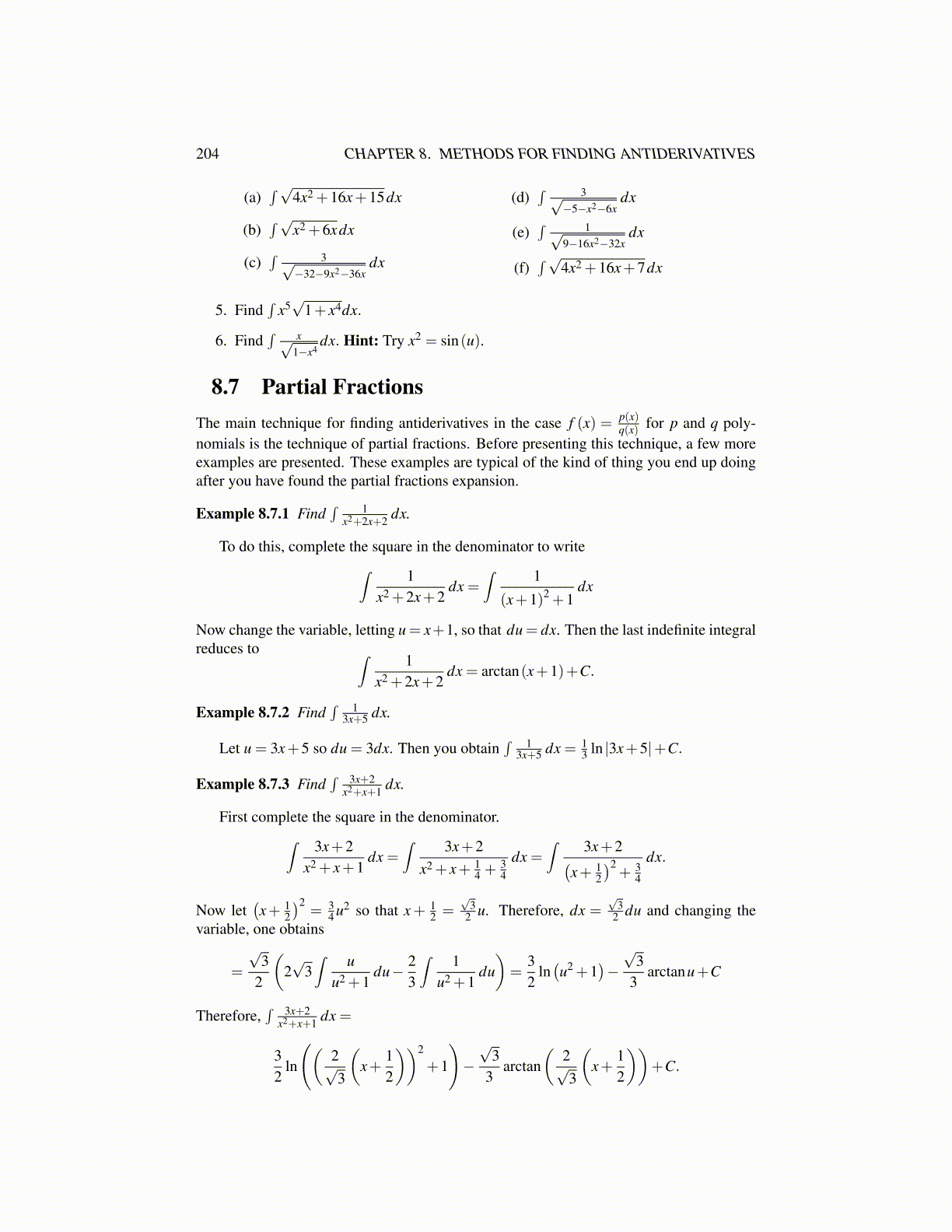
204 CHAPTER 8. METHODS FOR FINDING ANTIDERIVATIVES
(a)∫ √
4x2 +16x+15dx
(b)∫ √
x2 +6xdx
(c)∫ 3√
−32−9x2−36xdx
(d)∫ 3√
−5−x2−6xdx
(e)∫ 1√
9−16x2−32xdx
(f)∫ √
4x2 +16x+7dx
5. Find∫
x5√
1+ x4dx.
6. Find∫ x√
1−x4dx. Hint: Try x2 = sin(u).
8.7 Partial FractionsThe main technique for finding antiderivatives in the case f (x) = p(x)
q(x) for p and q poly-nomials is the technique of partial fractions. Before presenting this technique, a few moreexamples are presented. These examples are typical of the kind of thing you end up doingafter you have found the partial fractions expansion.
Example 8.7.1 Find∫ 1
x2+2x+2 dx.
To do this, complete the square in the denominator to write∫ 1x2 +2x+2
dx =∫ 1
(x+1)2 +1dx
Now change the variable, letting u = x+1, so that du = dx. Then the last indefinite integralreduces to ∫ 1
x2 +2x+2dx = arctan(x+1)+C.
Example 8.7.2 Find∫ 1
3x+5 dx.
Let u = 3x+5 so du = 3dx. Then you obtain∫ 1
3x+5 dx = 13 ln |3x+5|+C.
Example 8.7.3 Find∫ 3x+2
x2+x+1 dx.
First complete the square in the denominator.∫ 3x+2x2 + x+1
dx =∫ 3x+2
x2 + x+ 14 +
34
dx =∫ 3x+2(
x+ 12
)2+ 3
4
dx.
Now let(x+ 1
2
)2= 3
4 u2 so that x+ 12 =
√3
2 u. Therefore, dx =√
32 du and changing the
variable, one obtains
=
√3
2
(2√
3∫ u
u2 +1du− 2
3
∫ 1u2 +1
du)=
32
ln(u2 +1
)−
√3
3arctanu+C
Therefore,∫ 3x+2
x2+x+1 dx =
32
ln
((2√3
(x+
12
))2
+1
)−
√3
3arctan
(2√3
(x+
12
))+C.